Cabriole, saber, trumpet, flemish…
It almost sounds like a prop list from a 40’s Swashbuckler more than the names of chair leg styles. I’m reminded of a New England antique shop: rickety wood steps, a screen door that opens outward so I have to back down a step to open it, inadvertently brushing off a few tenuous green paint chips clinging to the weathered gingerbread. Inside it’s dusty, dark, and crammed full of antique furniture. Some treasures, some junk. All with a story to tell. I’m in furniture heaven.
I wasn’t savvy to it at the time, but I’ve since learned to notice the legs – shapely or straight, they are important clues to the style and period of a piece. Not a definitive guide to dating, but rather an indication of the derivation of a piece, since popular shapes have been reproduced throughout history.
The cabriole leg graced Louis XV, Queen Anne & Chippendale chairs of the 18th century. This pleasing leg form is still used by current-day manufacturers.
The Federal and the Sheraton styles of the late 18th to early 19th century featured a straight leg with fluted or reeded wood shaping.
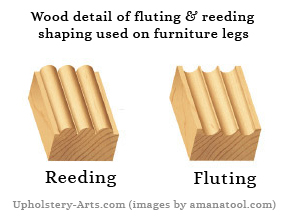
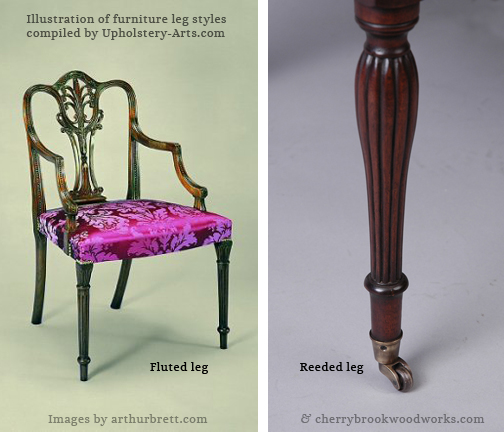 The S-shaped Flemish scroll leg shape came into vogue in the mid to late 17th century with the late Baroque furniture style, characterized by dark wood and elaborate carving.
The S-shaped Flemish scroll leg shape came into vogue in the mid to late 17th century with the late Baroque furniture style, characterized by dark wood and elaborate carving.
The saber leg shape was derived from ancient Greek & Roman chair design. 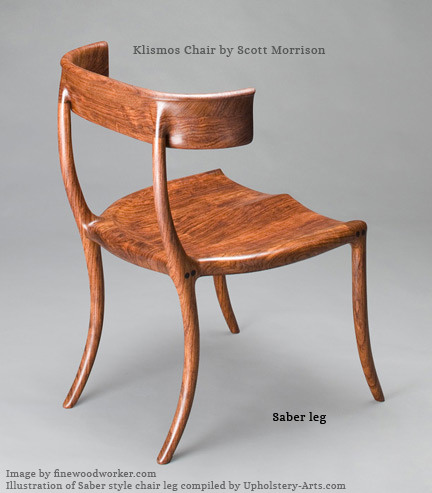 The trumpet leg, shaped just as you’d expect (like a trumpet), became popular when King William employed craftsmen from his native Holland during the late 17th century to design furniture for him.
The trumpet leg, shaped just as you’d expect (like a trumpet), became popular when King William employed craftsmen from his native Holland during the late 17th century to design furniture for him. 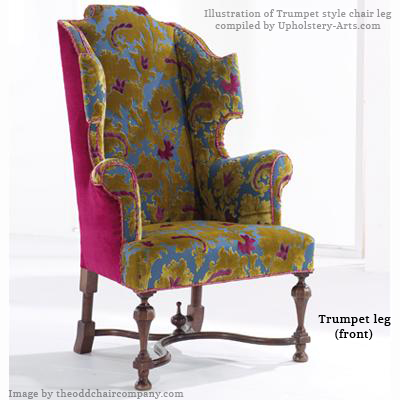 These five basic leg forms (cabriole, straight, flemish, saber and trumpet) are used, along with other features, to identify furniture from specific time periods (or reproductions there-of). I did not know any of this as I browsed that dusty New England antique shop, but I now know that leg shapes are an important key to unlocking the origins of a piece of furniture. Which shapes can you find on your furniture at home?
These five basic leg forms (cabriole, straight, flemish, saber and trumpet) are used, along with other features, to identify furniture from specific time periods (or reproductions there-of). I did not know any of this as I browsed that dusty New England antique shop, but I now know that leg shapes are an important key to unlocking the origins of a piece of furniture. Which shapes can you find on your furniture at home?
Identifying and dating antique furniture accurately takes years of practice. I am far from expert in this field, so I love a good revelation now and then. I find that looking at one piece of the puzzle at a time gives the learning process an air of discovery and fun!
Here’s a great article about getting to know the three different types of Louis-style chairs:
I’ll be exploring more furniture identification clues in future posts. If you’d like to learn more, sign up for my newsletter. I write about all aspects of upholstery, including its rich history.
Are you visually oriented? Join us on Pinterest!

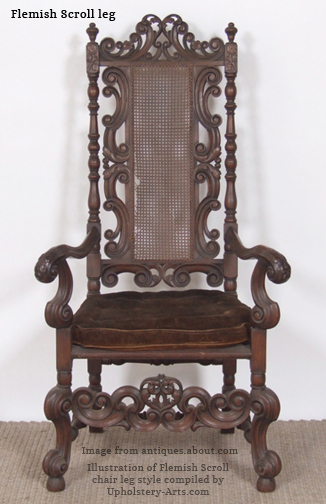
tankx